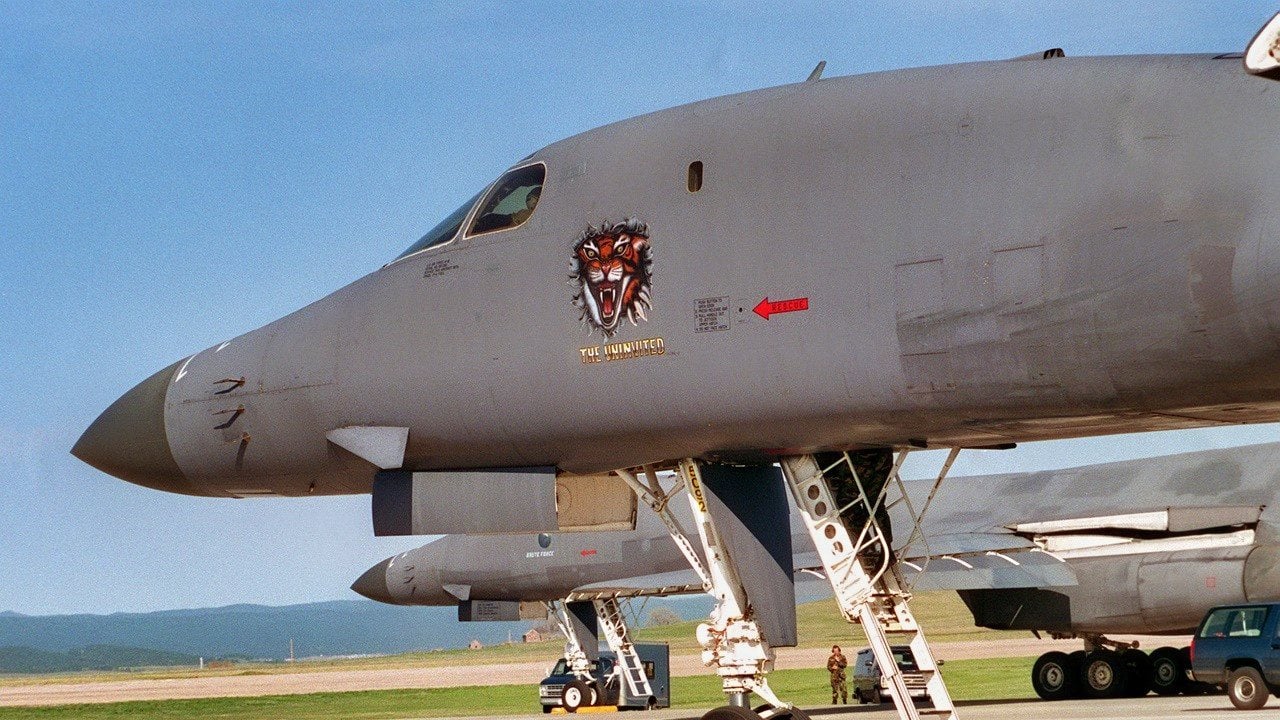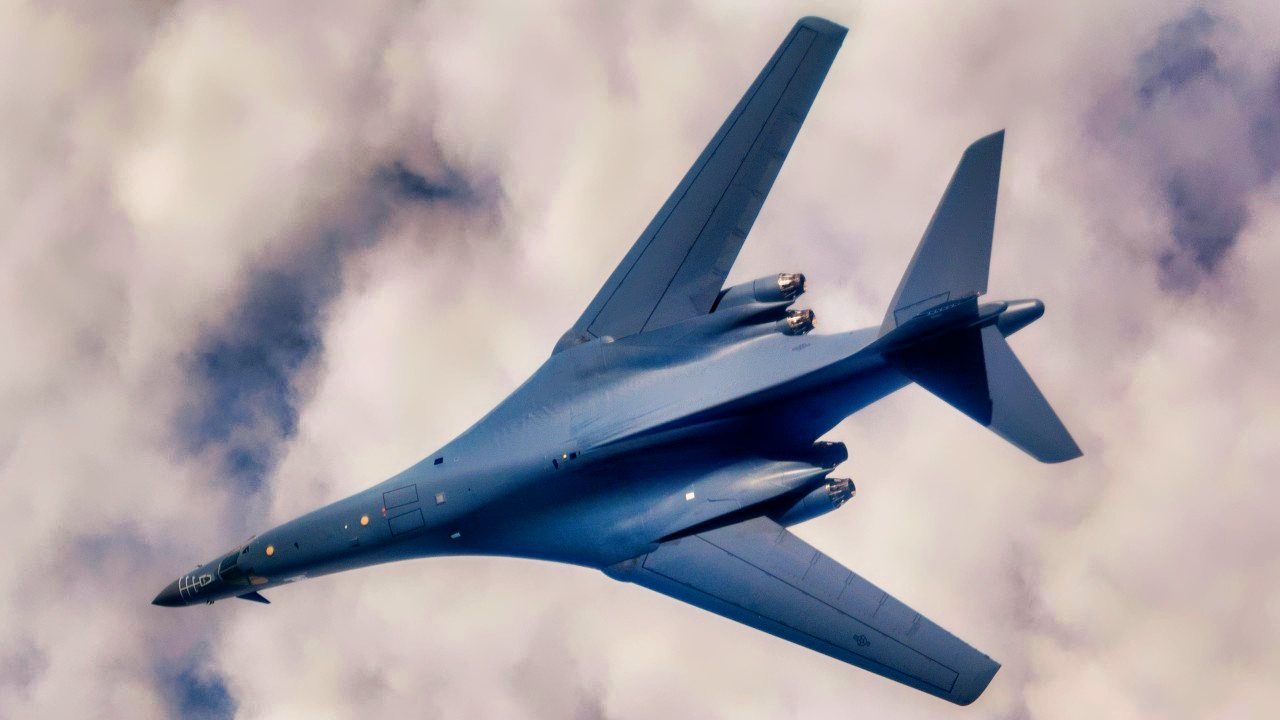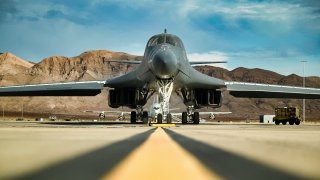The U.S. Air Force Just Proved Why the B-1B Lancer is Unstoppable
The Rockwell B-1 Lancer, initially flown 40 years ago, remains a key part of the U.S. Air Force's bomber fleet, even as its nuclear mission was removed in 1994.
Summary and Key Points: The Rockwell B-1 Lancer, initially flown 40 years ago, remains a key part of the U.S. Air Force's bomber fleet, even as its nuclear mission was removed in 1994.

-Though the Air Force plans to retire the B-1 as the B-21 Raider enters service, the remaining fleet of 45 Lancers has received significant upgrades, including enhanced communication systems and data storage. Maintainers at Ellsworth Air Force Base recently showcased their skills during the Raider Reach exercise, keeping the fleet mission-ready.
-Some retired B-1s stored in the "Boneyard" have also been reactivated to replace damaged aircraft.
B-1 Lancer: 40 Years of Flight and Still Essential to U.S. Air Power
It was 40 years ago next month that the first production Rockwell B-1 Lancer took its maiden flight, while the long-range strategic bomber reached initial operational capability on October 1, 1986. Now nearly four decades later, the "B-ONE" remains a vital component of the U.S. Air Force's bomber fleet – even as the nuclear mission was eliminated in 1994.
Though the Air Force will begin to retire the B-1 beginning later this decade as the Northrop Grumman B-21 Raider enters service, the remaining fleet of around 45 Lancers have been upgraded and enhanced.
As Maya Carlin wrote for The National Interest last month, the B-1Bs have "recently received significant technological upgrades under the Air Force's BEAST program at Dyess Air Force Base. These enhancements include a modernized Identification Friend or Foe system, Link 16 tactical data communications, updated mass data storage, and new secure communication systems."
The Maintainers Do Their Magic
Much of the real magic in keeping the B-1 Lancers flying is thanks to the hard work of the airmen assigned to the 28th Maintenance Group, and they recently had their moment to shine putting their "technical experiences from deployments and trainings into action by showcasing their skills during exercise Raider Reach" the Air Force announced. The training event is meant to test the unit's capabilities in "a real-world-based scenario" and ensure that the B-1B Lancers operated at Ellsworth AFB can remain "mission ready" for both real-world and training events.

"The experience gained through previous exercises and deployments have helped us tremendously by setting the precedent for longer work hours, continuous workloads, and the increased generation of aircraft," said Staff Sgt. Garry Moore, 37th Bomber Generation Squadron aerospace propulsion craftsman.
During the exercise, the maintainers were able to "display their knowledge of B-1 maintenance in an effort to exhibit mission capabilities."
Returning Old Bombers to Service
Even with the recent upgrades and efforts to maintain the fleet, the Air Force has still had to get "creative" at times, and that included reactivating previously retired B-1s from the Boneyard" at Davis-Monthan Air Force Base (AFB), Arizona. That included the aircraft nicknamed "Lancelot," which was selected earlier this year to replace a B-1 Lancer that was damaged beyond repair after suffering an engine mishap during otherwise "routine" maintenance at Dyess AFB, Texas in April 2022, while another aircraft – nicknamed "Rage" – was also resurrected. Both were from the 17 retired bombers maintained in "in a reclaimable condition."
Aircraft preserved at the Boneyard in reclaimable condition aren't simply left to soak in the sun. Each of the B-1s was maintained in Type 2000 storage, one level below the flyable Type 1000 storage. This entails the aircraft being covered with a silicone-like sealant, which covers gaps, engines, and all glass.
It remains unclear still if another retired bomber could be returned to service to replace the B-1 that crashed at Ellsworth AFB, South Dakota, on January 4 of this year.
Author Experience and Expertise: Peter Suciu
Peter Suciu is a Michigan-based writer. He has contributed to more than four dozen magazines, newspapers, and websites with over 3,200 published pieces over a twenty-year career in journalism. He regularly writes about military hardware, firearms history, cybersecurity, politics, and international affairs. Peter is also a Contributing Writer for Forbes and Clearance Jobs. You can follow him on Twitter: @PeterSuciu. You can email the author: [email protected].
Image Credit: Creative Commons and/or Shutterstock.


